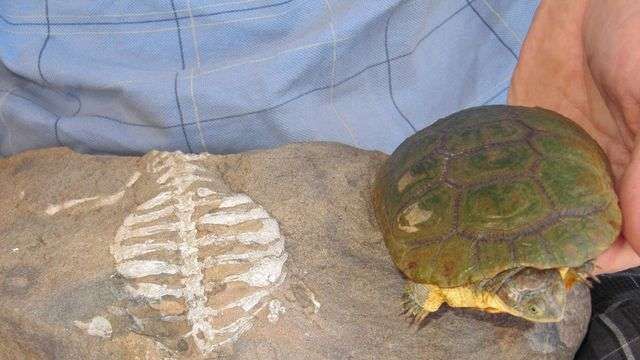Quck answer
Turtles have shells not only for protection, but also as an adaptation for their unique way of breathing. The shell is connected to the turtle’s spine and ribcage, creating a bony structure that allows them to expand and contract their lungs while still providing support. Additionally, the shell helps regulate the turtle’s body temperature and provides a surface for muscle attachment. While protection is certainly a benefit of having a shell, it is not the only reason why turtles evolved this unique feature.
Wild Animals

For 200 years, scientists have debated the origin of turtles’ shells, but an international group of scientists has found that the shell was not originally designed for protection. Instead, the turtle shell most likely began as a digging tool. According to Tyler Lyson, a paleontologist with the Denver Museum of Nature & Science and lead author of the study “Fossorial Origin of the Turtle Shell,” when turtles first developed shells, the process included a broadening of the ribs to make the turtle’s chest more rigid. Initially, this feature made it harder for the animal to breathe easily or move swiftly, but it allowed the turtle to forcefully dig with its forelimbs, which helped them to move from land to water. The researchers theorize that this helped turtles survive the Permian/Triassic extinction, the greatest mass extinction ever, and one which was spurred by hot, dry weather. The scientists discovered several specimens of a 260-million-year-old turtle named Eunotosaurus africanus, the oldest-known partially shelled proto-turtle, which they compared to gopher tortoises, which use their heads and necks to brace themselves while they dig with their forelimbs. The turtle’s shell as a protective enclosure is an exadaption, meaning an evolutionary trait that originally served one function but ends up serving another.В

A recent study on the oldest proto turtle, Eunotosaurus (left), suggests the broadening of the ribs in turtles was initially an adaptation for burrowing to escape the extremely arid environment of South Africa 260 million years ago. Later the ribs were…
Luke Norton/Denver Museum of Nature and Science
Scientists have been debating for over 200 years whether the turtle’s shell evolved from bony scales or as part of its rib broadening. With the discovery of partially shelled stem turtles, it now seems that the latter theory is more likely.
FAQ
1. What is the real reason turtles have shells?
The real reason turtles have shells is for thermoregulation and to support their internal organs.
2. Are turtle shells only for protection?
No, turtle shells are not only for protection. While they do offer some protection, their primary function is for thermoregulation and to support their internal organs.
3. How does a turtle shell help with thermoregulation?
A turtle’s shell helps with thermoregulation by providing a bony structure that retains heat and allows the turtle to warm up in the sun. The shell also provides shade and insulation, which helps the turtle to cool down and regulate its body temperature.
4. Do all turtles have shells?
Yes, all turtles have shells. However, the shape and size of the shell can vary depending on the species.
5. Are turtle shells made of bone?
Yes, turtle shells are made of bone. The top part of the shell, called the carapace, is made up of fused vertebrae and ribs. The bottom part of the shell, called the plastron, is also made of bone and is fused to the carapace.
6. Can a turtle survive without its shell?
No, a turtle cannot survive without its shell. The shell is an integral part of a turtle’s anatomy and provides support for its internal organs. Without a shell, a turtle would not be able to survive.
7. Can a turtle outgrow its shell?
No, a turtle cannot outgrow its shell. The shell is a part of the turtle’s body and grows with the turtle. As the turtle grows, the shell will also grow to accommodate its size.
8. How does a turtle get inside its shell?
A turtle gets inside its shell by retracting its head, legs, and tail into the shell. The turtle’s shell is attached to its spine, which allows it to move its limbs inside the shell.
9. Can a turtle’s shell heal if it’s injured?
Yes, a turtle’s shell can heal if it’s injured. The shell is made of living tissue and can regenerate if it’s damaged. However, the healing process can take a long time and may require the assistance of a veterinarian.
10. Are turtle shells sensitive to touch?
Yes, turtle shells are sensitive to touch. The nerves in a turtle’s shell are connected to its spinal cord, which allows it to feel pressure and touch.
11. Can a turtle’s shell change color?
No, a turtle’s shell cannot change color. The color of a turtle’s shell is determined by its genetics and is consistent throughout its life.
12. How long do turtle shells last?
Turtle shells can last for a very long time, up to several hundred years in some cases. However, the lifespan of a turtle’s shell can be affected by factors such as disease, injury, and environmental conditions.





Leave a Reply